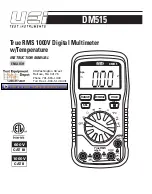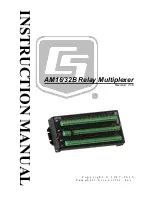
Step 5
(Continued from previous page)
Use the instructions provided to test any valves
(or solenoids or wires) on the stations with faulty
resistance measurements (Page 10 of this guide).
A Rain Bird Tone and Probe Kit (Model TI-TPK)
or a Rain Bird Wire Sorter (Model TI-WS6) can
be helpful in locating broken wires and diagnosing
your system. The "snap-around" feature of
Rain Bird’s Model TI-DSA500 Multi-Meter allows
you to check the current of field wiring without
disconnecting it.
Step 6
Turn the controller off and remove the cover.
Check the fuse using a Multi-Meter (Rain Bird
Model TI-DM200) and the instructions provided
(Page 7 of this guide). If the fuse is good,
proceed to Step 7. If the fuse is bad, replace
it and start again at Step 3.
Step 7
Check the 120 V power being supplied to the
controller according to the instructions provided
(Page 5 of this guide). If the 120 V power is
in range (105-129 VAC), proceed to Step 8.
If the power is out of range, have an electrician
troubleshoot the wiring to the controller. Once
the 120 V power has been restored, start again
at Step 3.
Step 8
Check the output of the transformer supplying
power to your controller according to the instructions
provided with your Multi-Meter (Page 6 of this
guide). If the transformer’s power output is in
range (24-28 VAC), you may need to have your
controller repaired. If the transformer’s output is
out of range, you may have a bad transformer.
- 4 -
RB.DM200.TGuide.mech 2/3/03 10:18 AM Page 4






























